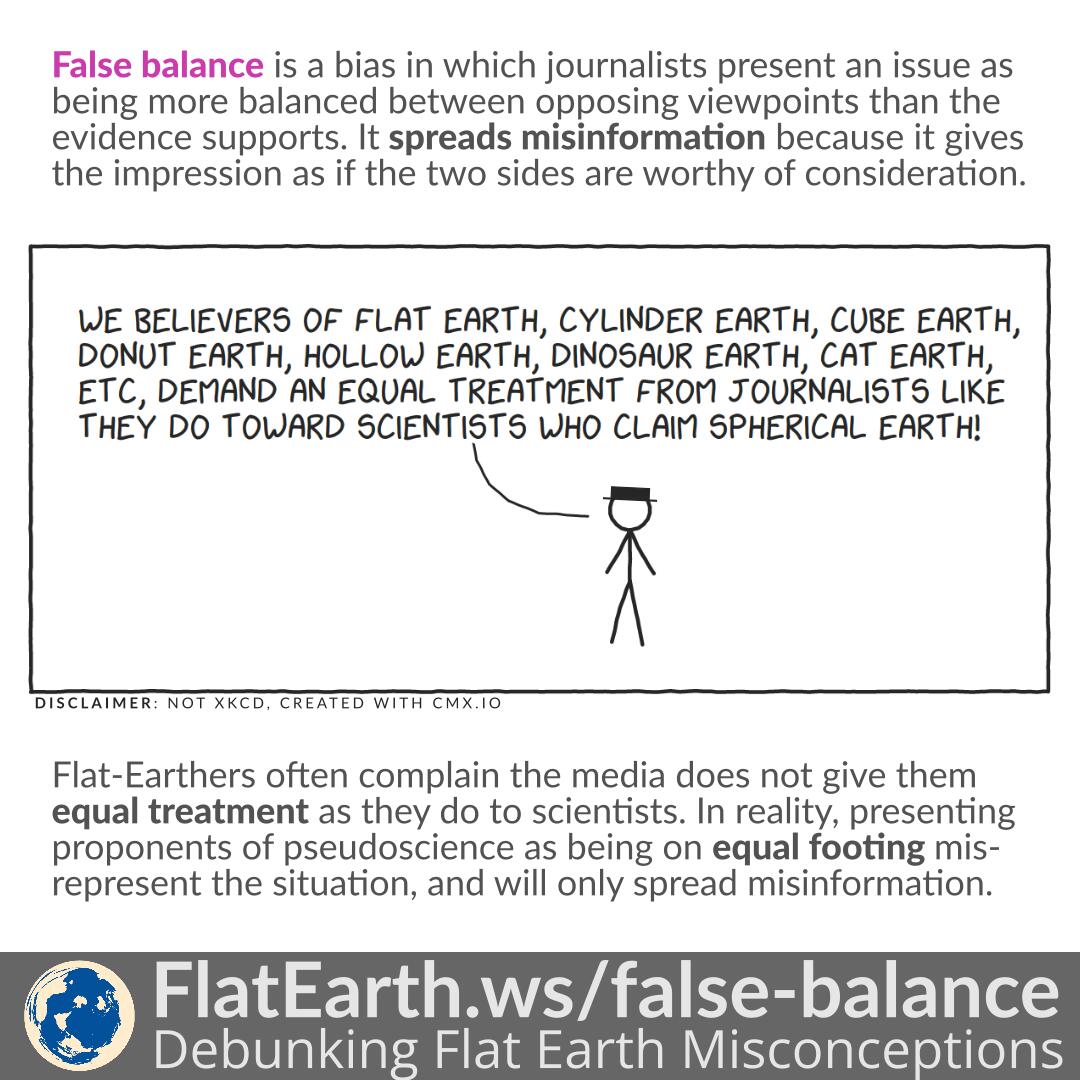False balance is a bias in which journalists present an issue as more balanced between opposing viewpoints than the evidence supports. False balance spreads misinformation because it gives the impression as if the two sides are worthy of consideration.
Flat-Earthers often complain that the media does not give them equal treatment as they do to scientists. In reality, presenting proponents of pseudoscience as being on equal footing misrepresent the reality of the situation and will only spread misinformation.
False balance occurs due to the incorrect assumption that giving “both sides” equal treatment is the least biased way to present a controversial issue. It is a common problem in the format of tabloid talk shows, where two opposing sides are made to confront each other in a debate. And the viewers get to decide who “wins” the contest.
Some problems with these kinds of journalism:
- Proponents of fringe concepts are given equal treatment as real scientists, even though very few scientists believe the fringe concept.
- Viewers usually decide the “winners” from their ability to debate than the actual merit of the concept being presented.
- Many viewers are looking for a chance to channel their own prejudices and prefer baseless conspiracy theories involving accusations of malice to others.
- Explaining a scientific concept often requires far more time and effort than others do to spread pseudoscientific concepts.
- Viewers usually do not have sufficient knowledge to decide which one is right and prefer ones they can understand, even if they are wrong.
References
- Balance fallacy – RationalWiki
- False Balance – (Pseudo-)Science Blog
- False balance – Wikipedia
- Manufactured controversy – Wikipedia
- Sensationalism – Wikipedia
- Science by press conference – Wikipedia
- Tabloid talk show – Wikipedia


